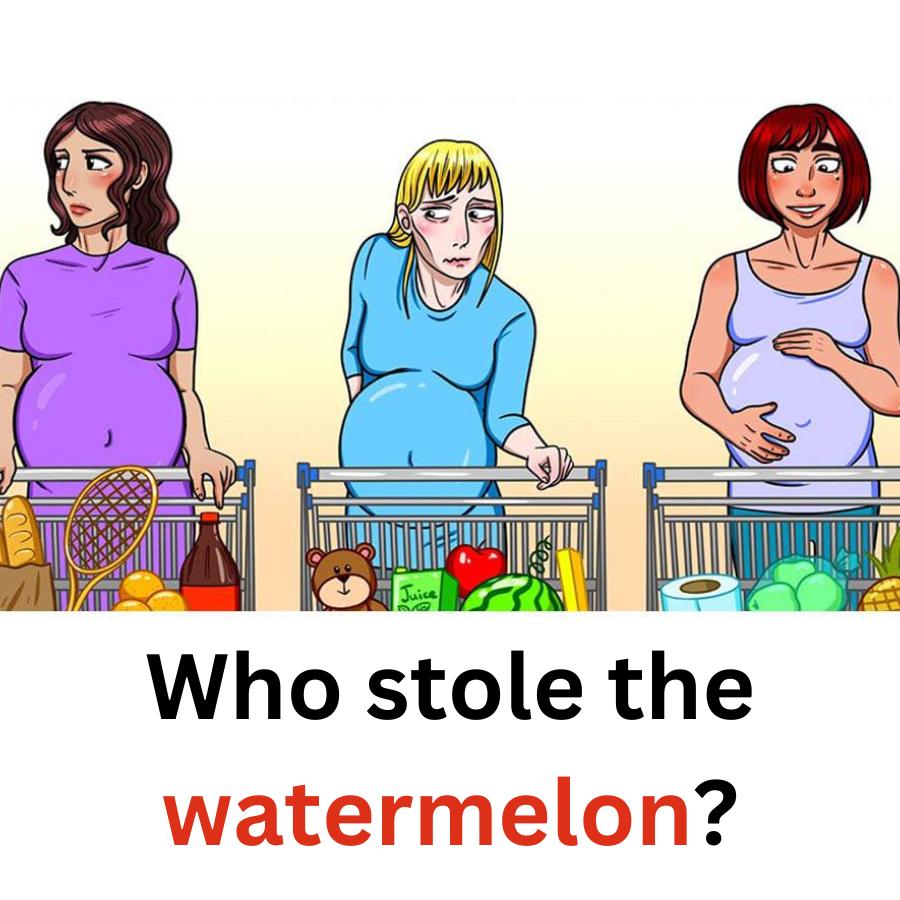
In the heart of a bustling marketplace, where the air is thick with the aroma of fresh produce and the chatter of eager shoppers, an unexpected mystery unfolds. A watermelon has vanished, and whispers ripple through the crowd: Who stole the watermelon?
The Scene of the Disappearance
The marketplace, typically a hub of commerce and community, becomes the backdrop for this puzzling event. Vendors proudly display their goods, and customers weave through stalls, seeking the best deals. Amidst this lively environment, a single watermelon goes missing, sparking curiosity and suspicion.
The Prime Suspect: The Woman in Purple
Eyes soon turn to a particular shopper—a woman dressed in a distinctive purple outfit. Her demeanor appears unremarkable, yet her presence becomes the focal point of the unfolding drama. Observers note that her shopping bags, though filled with various items, lack the expected contents for someone in her apparent condition. This discrepancy raises eyebrows and fuels speculation.
The Challenges of Concealing a Watermelon
Unlike smaller items that might easily slip into a pocket or bag, a watermelon presents a unique challenge for any would-be thief. Its size and weight make it conspicuous and cumbersome to conceal. This fact leads to debates among the onlookers: Could the woman in purple have orchestrated such a bold act without drawing attention?
Theories and Speculations
As the crowd buzzes with conversation, several theories emerge:
-
Innocent Mistake: Perhaps she picked up the watermelon, believing it to be part of her purchase, unaware of the ownership.
-
Calculated Theft: Some suggest she devised a clever distraction to execute the theft unnoticed.
-
Framing: Others ponder whether another individual placed the watermelon near her belongings to divert suspicion from themselves.
The Role of Marketplace Dynamics
The incident highlights the complex dynamics of the marketplace. In such a crowded and transient environment, misunderstandings can easily occur, and assumptions can quickly lead to misplaced accusations. The situation underscores the importance of vigilance and the potential consequences of jumping to conclusions without evidence.
The Importance of Evidence
Amid the growing tension, the need for concrete evidence becomes paramount. Vendors and shoppers alike consider possible sources of information:
-
Eyewitness Accounts: Did anyone see the moment the watermelon disappeared?
-
Surveillance Footage: Are there cameras that might have captured the incident?
-
Vendor Records: Could sales records clarify whether the watermelon was sold or misplaced?
The Woman’s Perspective
While the crowd speculates, little is known about the woman in purple’s side of the story. She may be entirely unaware of the suspicions surrounding her. This aspect of the narrative serves as a reminder of the potential harm in forming judgments without understanding all perspectives.
Lessons Learned
The mystery of the stolen watermelon, though seemingly trivial, offers broader insights:
-
Perception vs. Reality: Things are not always as they appear; assumptions can be misleading.
-
Community Vigilance: In communal spaces, collective awareness can prevent misunderstandings and deter wrongdoing.
-
Empathy and Restraint: Exercising empathy and refraining from hasty judgments fosters a more just and harmonious community.
Conclusion
The tale of the missing watermelon remains unresolved, leaving the marketplace abuzz with theories and reflections. This incident, minor as it may seem, prompts introspection about human behavior, the reliability of perception, and the value of withholding judgment until all facts are known. As shoppers and vendors continue their routines, the story of the watermelon serves as a subtle reminder of the mysteries that can unfold in everyday life and the importance of approaching them with curiosity, caution, and compassion.





